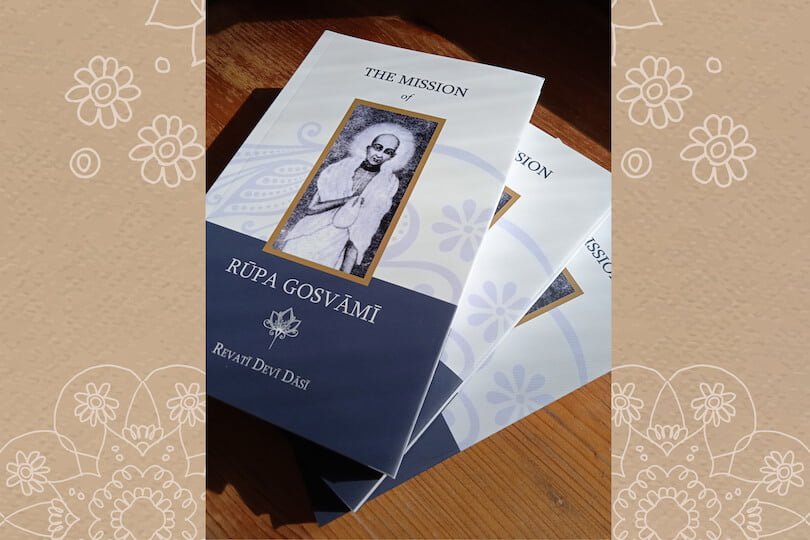The Mission of Rupa Goswami
By Revati Devi Dasi | Oct 25, 2022

The driving force behind Rūpa Gosvāmī’s acts, including his vast literary repertoire, was Caitanya Mahāprabhu, renowned as the initiator of the Gauḍīya Vaiṣṇava lineage in sixteenth-century India. In the eyes of his followers, Śrī Caitanya descended to earth to enact a specific redemptive mission. Indeed, his bhakti movement changed the hearts and faith of countless people, both in India of his day and worldwide in the modern era, by instilling in them the path of pure love of God

The book being received by Śivarāma Swami
Like many who were touched by Mahāprabhu and his teachings, Rūpa Gosvāmī left behind his worldly life and dedicated himself to the mission of his master. The significance of Rūpa Gosvāmī in Gauḍīya Vaiṣṇavism is implicitly accepted even by the present-day devotees of Lord Caitanya. It is so much so that they often refer to themselves as rūpānugas – the followers of Rūpa – instead of Gauḍīya Vaiṣṇavas, using the two terms practically as synonyms. But what made Rūpa Gosvāmī so outstanding?
By dedicating an entire volume exclusively to the ācārya, The Mission of Rūpa Gosvāmī is nearly unique; and it is definitely unique in terms of its approach to the subject. The book does not simply intend to provide a biography; it is an attempt to reveal Rūpa Gosvāmī’s prominent position by exploring the instructions and orders he received from Caitanya Mahāprabhu and how he accomplished his mission. All the while, as the theme unfolds, the reader is given an extensive overview of Śrī Rūpa’s literature.

At the lotus feet of Śrī Śrī Dayal Nitāi-Vijaya Gauranga in the Budapest Temple, Hungary
The Anthology of Essays, Verses, Excerpts following the main text of the book, includes a collection of verses praising and elaborating upon Rūpa Gosvāmī both in his sixteenth-century identity and as Rūpa-mañjarī, his eternal female form in the spiritual world; glorious narrations about Rūpa Gosvāmī’s life in Vṛndāvana and his work in refurbishing its sacred environment, and much more, all to give a complete picture of Śrī Rūpa, who is arguably the most important of all ācāryas.
The book is available in most devotee bookstores and on the internet, or directly from the author:















